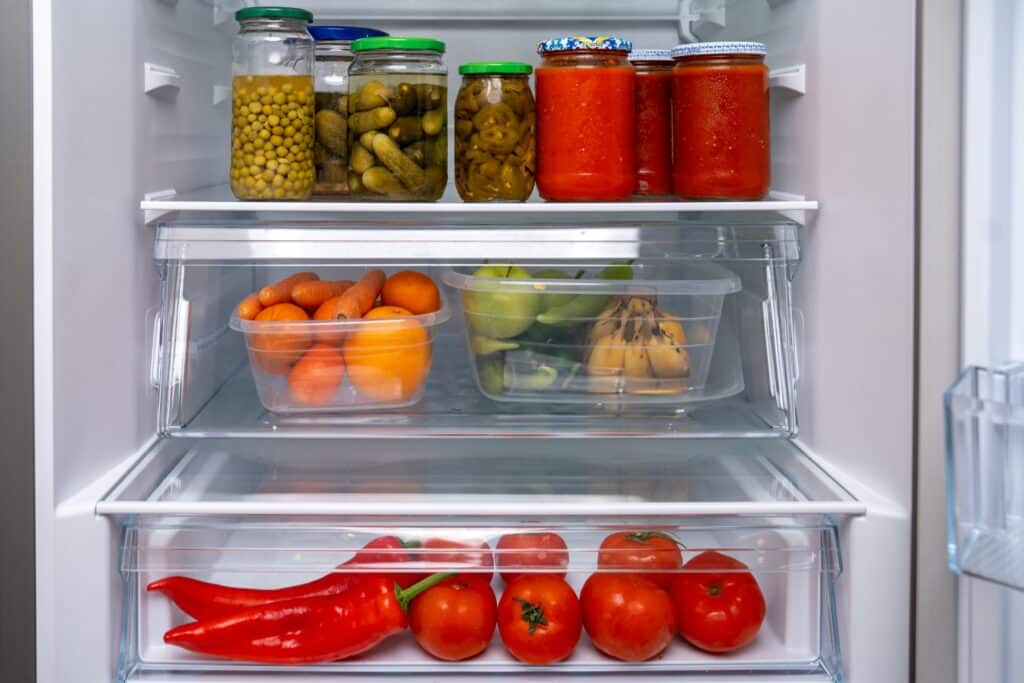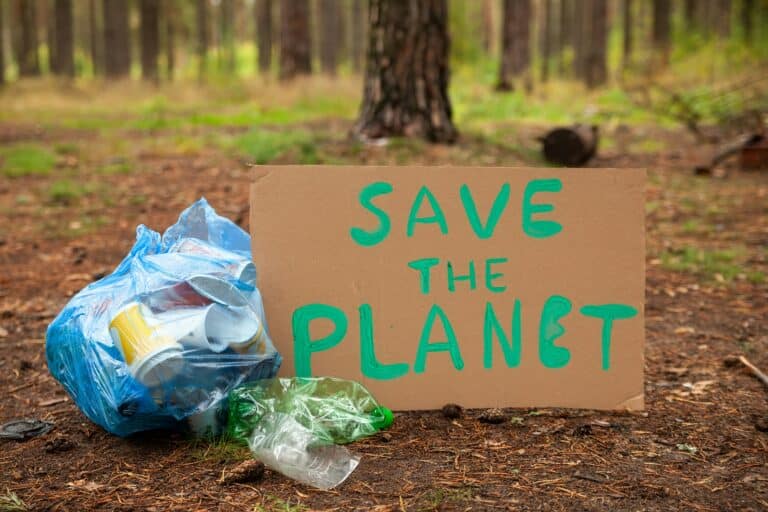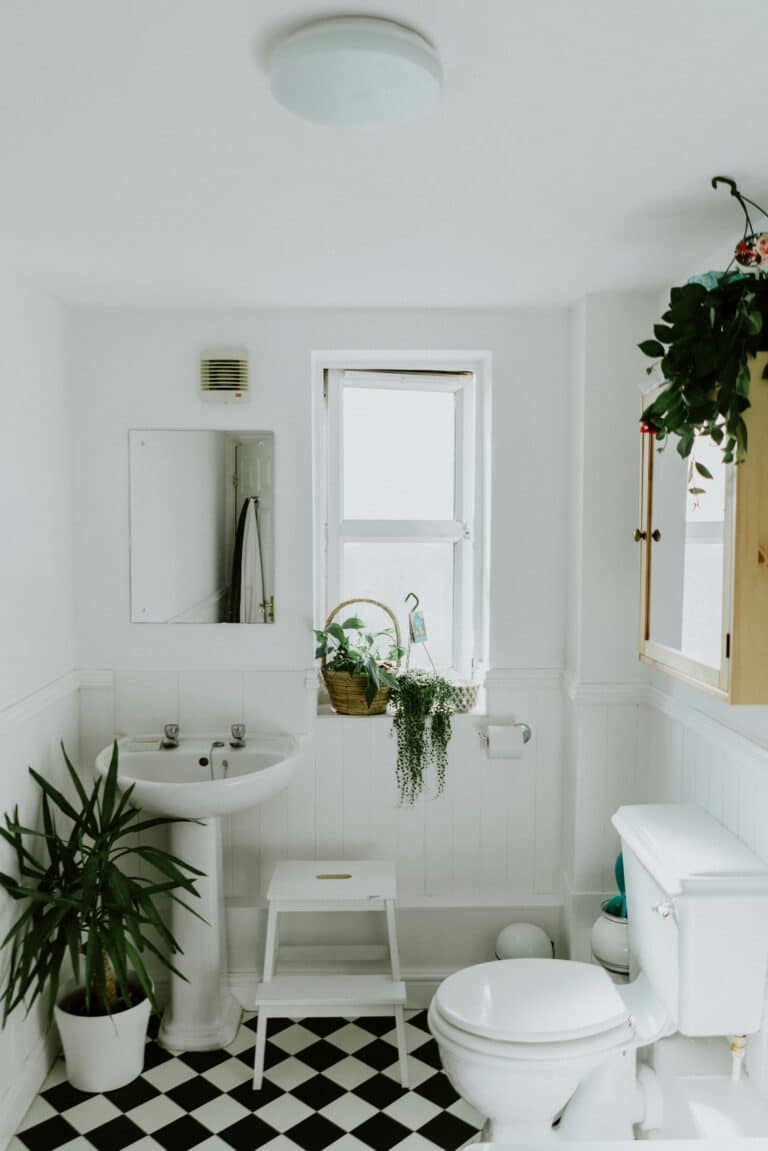👀 It may sound too good to be true, but with the right strategies, achieving a plastic-free freezer storage is not only possible but also sustainable and efficient. ⚡
For years, plastic has been the go-to material for freezer storage. Its flexibility, durability, and low cost have made it a staple in many households. However, mounting concerns about plastic’s environmental impact are prompting more people to seek out sustainable alternatives. 👣

But let’s be honest: transitioning from plastic to eco-friendly freezer storage solutions isn’t as simple as flipping a switch. It requires careful planning, a little creativity, and a willingness to change old habits. It’s not an overnight process, but the benefits – both for you and our planet – are well worth the effort. 🌏
The Challenge of Plastic-Free Freezer Storage
Before we dive into the meat and potatoes of this topic, it’s essential to understand why achieving plastic-free freezer storage can be challenging. The main issues revolve around convenience, functionality, and cost. Plastic is undeniably handy and inexpensive, and it seems to work perfectly in the freezer environment. So, why change?
The answer is simple: sustainability. 🍃 As an increasing number of consumers become aware of the need to reduce plastic waste, they are actively looking for ways to minimize their environmental footprint. And that includes rethinking how they store food in the freezer.
The Benefits of Plastic-Free Freezer Storage
What if I told you that you could minimize waste, save money, and enjoy better-tasting food all at the same time? These are just some of the benefits of going plastic-free in your freezer. 🙌 Here, we’ll uncover how transitioning to sustainable freezer storage solutions can impact your life and the planet positively.
The Journey to Sustainable Freezer Storage
Now that you’re acquainted with the ‘why,’ let’s move onto the ‘how.’ The journey to sustainable freezer storage involves exploring different materials, adopting new storage methods, and experimenting until you find what works best for you. Don’t worry; we’re going to walk through this journey together, step by step. 😊
By the end of this comprehensive guide, you’ll have a clear roadmap to achieving a plastic-free freezer storage system that’s not just environmentally friendly, but also practical and efficient. So, let’s get started on this journey towards “Frosty Freedom” and say goodbye to plastic in our freezers once and for all! 🙋♂️
🌱 Welcome to the Age of Sustainable Freezer Storage
As concerns about our environment and the effects of climate change grow, we are all faced with the question: how can we live more sustainably? One aspect of daily life that often goes overlooked is freezer storage. Standard freezer bags are convenient, but they are also made of plastic, a material notorious for its environmental harm. But don’t despair – there are numerous plastic-free alternatives available that are just as effective and far kinder to our planet.
In this article, we will explore various sustainable solutions for freezer storage, diving into the world of Frosty Freedom. As we examine each option, we’ll assess its strengths, weaknesses, and suitability for different types of food. We’ll also provide links to informative YouTube videos that give further insight into the products and practices we discuss. So, let’s begin our journey towards plastic-free freezing!
Remember, every step towards sustainability matters. As the old saying goes, “The journey of a thousand miles begins with a single step.” Now, let’s take that first step together.
🥦The World of Reusable Freezer Bags
The rise of reusable freezer bags marks a significant stride towards Frosty Freedom. These innovative storage solutions are not only reusable, thereby reducing waste, but are also made from sustainable materials that are less harmful to the environment.
Among the top options in this category are Stasher Bags, EcoRoots Reusable Freezer Bags, and Zip Top Containers. All of these options are made from food-grade silicone, a material that is not only safe for food storage, but also incredibly durable. Additionally, these bags are dishwasher safe, making them easy to clean and reuse time and time again.
Here’s a comparative table to help you understand the key features of each product:
| Brand | Material | Dishwasher Safe | Available Sizes |
|---|---|---|---|
| Stasher Bags | Food-grade silicone | Yes | Small, Medium, Large |
| EcoRoots Reusable Freezer Bags | Food-grade silicone | Yes | Medium, Large |
| Zip Top Containers | Food-grade silicone | Yes | Small, Medium, Large, Extra Large |
For a comprehensive review of these options, check out the YouTube video “Plastic-Free Freezer Storage Reviews” on the Eco Warrior Princess channel.
🍞 Exploring the Potential of Beeswax Wraps
Another innovative and eco-friendly solution for freezer storage is beeswax wraps. Made from organic cotton coated in beeswax, these wraps are ideal for storing items like bread, cheese, fruits, and vegetables. They can be molded to fit the shape of the food, ensuring a snug fit that locks in freshness.
Brands like Bee’s Wrap and Abeego are known for their high-quality beeswax wraps, which can be reused for up to a year with proper care. Moreover, once the wrap has reached the end of its lifespan, it can be composted, ensuring zero waste.
However, there are some limitations to beeswax wraps. They are not recommended for storing raw meat or fish, as the beeswax cannot be cleaned at the high temperatures required to kill bacteria associated with these foods.
🍎Beeswax Wraps Vs. Reusable Freezer Bags
While both beeswax wraps and reusable freezer bags are great sustainable storage solutions, they each have their own strengths and weaknesses. Beeswax wraps are more flexible and better for wrapping items of irregular shapes, but they are not suitable for all types of food. Reusable freezer bags, on the other hand, are more versatile, but they are less flexible.
Therefore, the choice between beeswax wraps and reusable freezer bags depends on your specific needs and the types of food you typically store. Consider keeping a mix of both in your kitchen for maximum flexibility and convenience.
To see beeswax wraps in action, check out the YouTube video “How to Use Beeswax Wraps” by Goodful.
🌽 Glass Containers: The Timeless Classic
Last but not least, let’s not forget the timeless classic: glass containers. While not as innovative as silicone bags or beeswax wraps, glass containers are a tried and true method for freezer storage. They are durable, reusable, and completely free of harmful chemicals.
Brands like Pyrex and Anchor Hocking are renowned for their high-quality glass containers. These products come in a range of sizes and shapes, with secure lids to ensure your food stays fresh.
Moreover, glass containers are microwave-safe, allowing you to reheat your food directly from the freezer. However, it’s important to note that sudden temperature changes can cause glass to break, so always allow your container to reach room temperature before heating it.
For a detailed guide on using glass containers for freezer storage, watch the YouTube video “Freezer Organization with Glass Jars” by The Family Fudge.
By embracing these sustainable freezer storage solutions, we can all contribute to a healthier planet. So why wait? Join the Frosty Freedom movement today and take a step towards a greener tomorrow.
Conclusion
In conclusion, we have traveled an extensive journey in this article, unraveling the critical and intricate aspects of software engineering and its practices. We have delved into the vital components of software development, the various types of software engineering, the role of a software engineer, and the significance of effective software engineering in today’s tech-driven world.
Through this lens, it has become abundantly clear that software engineering is not only a pivotal aspect of IT but also an evolving and crucial field in our ever-progressing technological world. The role of a software engineer has proven to be versatile and expansive, encompassing a wide array of responsibilities that go beyond mere coding and testing.
We explored the diverse types of software engineering, each with its own unique focus and methodology. From application software engineering to systems software engineering, the spectrum of software engineering proves its versatility and applicability in numerous sectors and industries.
This article has also shed light on the importance of effective software engineering, bringing to the fore the vital role it plays in ensuring efficiency, reliability, and quality of software systems. In a world heavily reliant on technology, the relevance and value of effective software engineering cannot be overstated.
We hope that this article has provided you with a deep and comprehensive understanding of software engineering and its significant role in our world today. If you found this article useful, do not hesitate to share it with your colleagues and friends. Sharing knowledge is a great way to contribute to the broader community of learners. If you have any comments or thoughts on this topic, we would love to hear from you. Feel free to drop a comment below.
Moreover, if you wish to explore this topic further, we recommend checking out the following resources. The IEEE Computer Society Digital Library 📚 offers a wealth of resources on software engineering and related disciplines. For more in-depth learning, consider taking an online course. Coursera 🎓 offers a range of courses on software engineering from top universities and institutions.
Lastly, remember that the world of software engineering is constantly evolving. Stay curious, keep learning, and strive for excellence. The future of software engineering is bright and full of endless possibilities. Let’s keep exploring this fascinating world together.
Thank you for your time, and we look forward to engaging more with you in the future. Until then, happy learning! 🚀💻🌐



